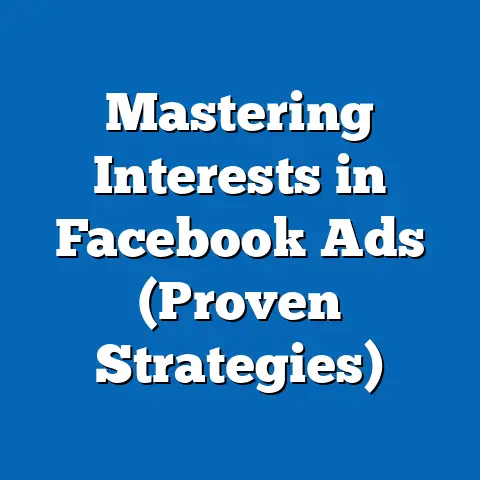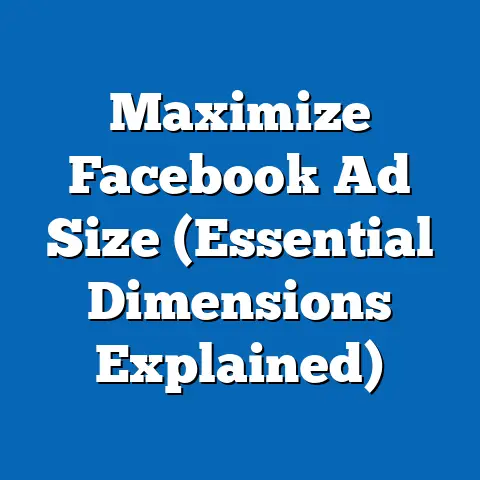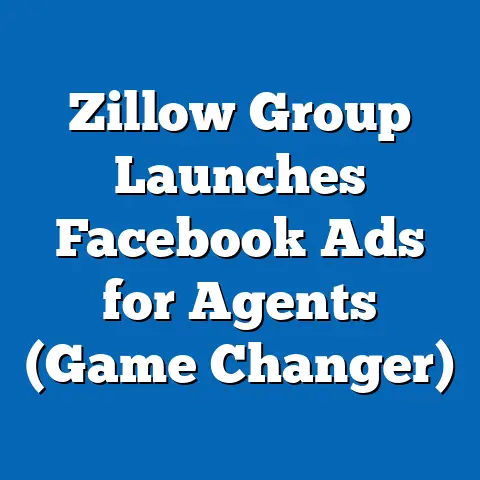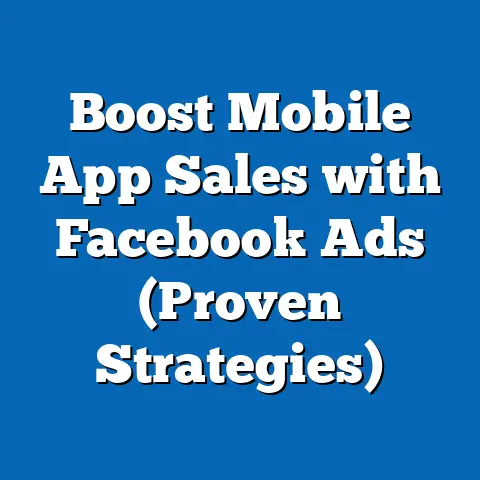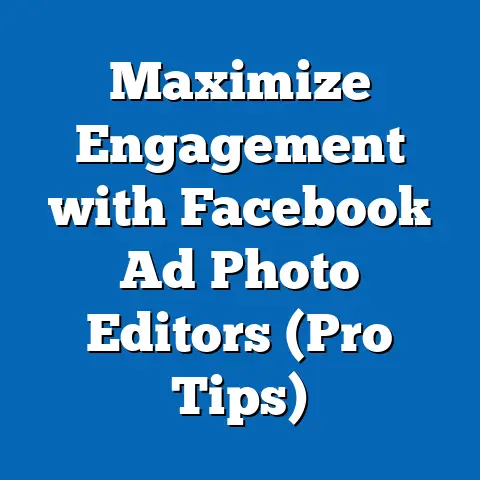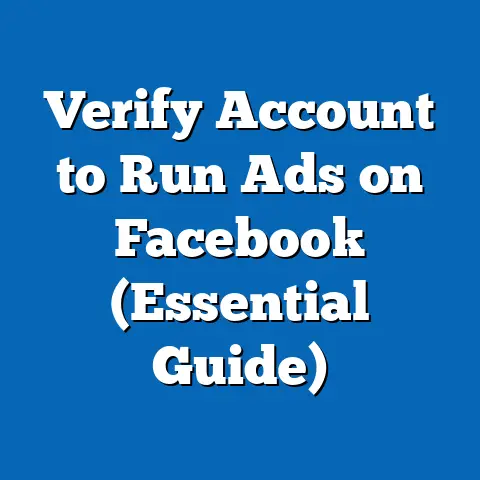Maximize ROI with Facebook Ads Secrets (Expert Insights)
In the ever-evolving world of digital marketing, Facebook Ads stand as a powerful tool to reach billions of potential customers. However, simply running ads isn’t enough. To truly succeed, you need to understand how to optimize your campaigns for the highest possible Return on Investment (ROI). It’s a painful truth that many businesses leave money on the table, failing to unlock the full potential of Facebook Ads due to a lack of insider knowledge and strategic implementation.
I’ve seen this firsthand, working with countless clients who were frustrated with their ad performance. They were spending money, but not seeing the returns they expected. It’s like driving a high-performance sports car in first gear – you’re not even scratching the surface of what’s possible.
According to a recent study by Statista, the average ROI for Facebook Ads is around 152%. That’s a significant number, but many businesses fall far short of it. Why? Because they’re missing the secrets that separate the winners from the also-rans. This guide is designed to equip you with those secrets, providing expert insights and actionable strategies to maximize your ROI with Facebook Ads. Get ready to shift into high gear!
Section 1: Understanding Facebook Ads and ROI
Before diving into the advanced strategies, let’s lay the groundwork with a solid understanding of Facebook Ads and ROI.
What are Facebook Ads?
Facebook Ads are paid messages that businesses can display on Facebook and its affiliated platforms, including Instagram, Messenger, and the Audience Network. These ads can take various forms, including images, videos, carousels, and lead generation forms. What makes Facebook Ads so powerful is their sophisticated targeting capabilities, allowing you to reach specific demographics, interests, behaviors, and even custom audiences based on your existing customer data.
I remember when Facebook Ads first launched – it was a game-changer. Suddenly, small businesses had access to a level of targeting previously only available to large corporations. It leveled the playing field and opened up a world of possibilities.
ROI: The Key Metric for Success
Return on Investment (ROI) is a key performance indicator (KPI) that measures the profitability of your Facebook Ads campaigns. In simple terms, it tells you how much money you’re making for every dollar you spend on advertising. A positive ROI means your ads are generating more revenue than they cost, while a negative ROI indicates that you’re losing money.
ROI is crucial for several reasons:
- Justification of Ad Spend: It helps you justify your advertising budget to stakeholders by demonstrating the financial impact of your campaigns.
- Optimization Opportunities: It identifies areas where you can improve your ad performance, such as targeting, creative, or bidding strategies.
- Strategic Decision-Making: It informs your overall marketing strategy by highlighting which campaigns are most effective and where to allocate resources.
Metrics to Measure ROI on Facebook Ads
Several metrics contribute to calculating your ROI on Facebook Ads. Here are some of the most important ones:
- Cost-Per-Click (CPC): The amount you pay each time someone clicks on your ad. A lower CPC indicates that your ads are relevant and engaging to your target audience.
- Cost-Per-Acquisition (CPA): The amount you pay for each conversion, such as a purchase, lead, or sign-up. A lower CPA means you’re efficiently acquiring customers through your ads.
- Return on Ad Spend (ROAS): The revenue generated for every dollar spent on advertising. A higher ROAS indicates a more profitable campaign.
- Conversion Rate: The percentage of people who click on your ad and then complete a desired action, such as making a purchase. A higher conversion rate means your landing page and offer are compelling.
- Click-Through Rate (CTR): The percentage of people who see your ad and then click on it. A higher CTR indicates that your ad creative and copy are effective at capturing attention.
Takeaway: Understanding Facebook Ads and ROI is the foundation for successful campaigns. By tracking key metrics and analyzing your performance, you can identify areas for improvement and maximize your returns.
Section 2: The Anatomy of a Successful Facebook Ad Campaign
Now that we have a grasp on the basics, let’s dissect the anatomy of a successful Facebook Ad campaign. Think of it like building a house – you need a solid foundation and well-constructed components to create something that stands the test of time.
Key Components of a Facebook Ad Campaign
A Facebook Ad campaign consists of several interconnected components, each playing a crucial role in its overall success:
- Targeting: Selecting the right audience for your ads.
- Creative: Designing visually appealing and engaging ad creatives (images, videos, carousels).
- Copy: Writing compelling ad copy that resonates with your target audience.
- Budget: Allocating the appropriate amount of money to your campaigns.
- Bidding Strategies: Choosing the right bidding strategy to optimize your ad delivery and costs.
Selecting the Right Audience
Targeting is arguably the most critical component of a successful Facebook Ad campaign. If you’re showing your ads to the wrong people, you’re essentially throwing money away. Facebook offers a wide range of targeting options, including:
- Demographics: Age, gender, location, education, job title, etc.
- Interests: Hobbies, interests, pages they like, etc.
- Behaviors: Purchase behavior, device usage, travel habits, etc.
- Custom Audiences: Uploading your own customer data (email lists, phone numbers) to target existing customers or create lookalike audiences.
- Lookalike Audiences: Creating new audiences that share similar characteristics with your existing customers.
I’ve found that creating detailed buyer personas is essential for effective targeting. A buyer persona is a semi-fictional representation of your ideal customer, based on research and data about your existing customers. By understanding their demographics, interests, pain points, and motivations, you can create highly targeted ads that resonate with them.
For example, if you’re selling organic baby food, your buyer persona might be a millennial mom interested in healthy living, parenting blogs, and sustainable products. You can then use Facebook’s targeting options to reach women who fit this profile.
The Significance of Ad Creative and Copywriting
Even with perfect targeting, your ads will fall flat if your creative and copy are uninspiring. Think of your ad as a mini-sales pitch – you have a few seconds to capture someone’s attention and convince them to take action.
Here are some tips for creating compelling ad creative and copywriting:
- Use High-Quality Visuals: Choose images or videos that are visually appealing, relevant to your offer, and optimized for Facebook’s ad specifications.
- Grab Attention with a Strong Headline: Your headline should be concise, attention-grabbing, and clearly communicate the value proposition of your offer.
- Write Benefit-Driven Copy: Focus on the benefits of your product or service, rather than just listing features. Explain how it will solve your target audience’s problems or improve their lives.
- Include a Clear Call-to-Action (CTA): Tell people exactly what you want them to do, such as “Shop Now,” “Learn More,” or “Sign Up Today.”
- A/B Test Different Variations: Experiment with different headlines, images, and copy to see what resonates best with your target audience.
Takeaway: A successful Facebook Ad campaign requires a holistic approach, combining precise targeting with compelling creative and copy. By understanding your audience and crafting ads that speak to their needs and desires, you can significantly improve your ROI.
Section 3: Expert Strategies for Maximizing ROI
Now, let’s delve into some expert strategies that can take your Facebook Ads ROI to the next level. These are the techniques that I’ve seen consistently deliver results for my clients.
Advanced Targeting Techniques
Beyond the basic targeting options, Facebook offers several advanced techniques that can help you reach highly specific and engaged audiences:
- Retargeting: Showing ads to people who have previously interacted with your website, app, or Facebook page. This is a powerful way to re-engage potential customers who have shown interest in your brand.
- Custom Audiences: Uploading your own customer data (email lists, phone numbers) to create targeted audiences. This allows you to reach existing customers with special offers or upsell opportunities.
- Lookalike Audiences: Creating new audiences that share similar characteristics with your existing customers. This is a great way to expand your reach and find new potential customers who are likely to be interested in your products or services.
I’ve had tremendous success with retargeting campaigns. For example, one of my clients, an e-commerce store selling handmade jewelry, saw a 300% increase in conversion rates after implementing a retargeting campaign that showed ads to people who had previously viewed products on their website.
The Power of A/B Testing
A/B testing, also known as split testing, is the process of comparing two versions of an ad to see which one performs better. This is an essential technique for optimizing your ad creative, copy, and targeting.
Here are some elements you can A/B test:
- Headlines: Test different headlines to see which one grabs the most attention.
- Images: Test different images to see which one resonates best with your target audience.
- Copy: Test different ad copy to see which one drives the most clicks and conversions.
- Targeting: Test different targeting options to see which one reaches the most engaged audience.
- Calls-to-Action: Test different CTAs to see which one generates the most conversions.
Facebook’s Ads Manager makes it easy to set up A/B tests. Simply create two versions of your ad, specify the element you want to test, and let Facebook automatically split your traffic between the two versions. After a few days or weeks, you can analyze the results and determine which version performed better.
The Role of Facebook Pixel
The Facebook Pixel is a small piece of code that you can install on your website to track user behavior. This data can then be used to optimize your ad campaigns and improve your ROI.
Here are some of the things you can track with the Facebook Pixel:
- Page Views: Track which pages people are visiting on your website.
- Add to Carts: Track when people add products to their shopping carts.
- Purchases: Track when people complete a purchase on your website.
- Leads: Track when people submit a lead form on your website.
By tracking these events, you can gain valuable insights into your customer journey and identify areas where you can improve your website or ad campaigns. For example, if you notice that a lot of people are adding products to their shopping carts but not completing the purchase, you might want to offer a discount or free shipping to encourage them to complete the transaction.
Takeaway: Advanced targeting techniques, A/B testing, and the Facebook Pixel are powerful tools that can help you maximize your ROI with Facebook Ads. By leveraging these strategies, you can reach the right audience, optimize your ad creative, and track your results to continuously improve your performance.
Section 4: Budgeting and Bidding: Making Every Dollar Count
Budgeting and bidding are critical aspects of Facebook Ads that directly impact your ROI. It’s not just about spending money; it’s about spending it wisely.
Budgeting Strategies: Daily vs. Lifetime Budgets
Facebook offers two main budgeting options:
- Daily Budget: The average amount you’re willing to spend each day on your ad campaign.
- Lifetime Budget: The total amount you’re willing to spend over the entire duration of your ad campaign.
The best option for you will depend on your specific goals and needs.
- Daily Budgets: Are ideal for campaigns that run continuously or for testing different ad variations. They provide more flexibility and allow you to adjust your spending based on performance.
- Lifetime Budgets: Are better suited for campaigns with a specific end date, such as a limited-time promotion. They ensure that you don’t exceed your overall budget.
I typically recommend using daily budgets for most campaigns, as they provide more control and flexibility. However, if you have a specific budget and timeline in mind, a lifetime budget might be a better option.
Bidding Strategies: Automatic vs. Manual Bidding
Facebook offers several bidding strategies to optimize your ad delivery and costs:
- Automatic Bidding: Facebook automatically sets your bids to get the most results for your budget. This is a good option for beginners or for campaigns where you don’t have a lot of data to inform your bidding decisions.
- Manual Bidding: You manually set your bids to control how much you’re willing to pay for each click or conversion. This is a more advanced option that requires more data and expertise, but it can also lead to better results.
Within manual bidding, there are several sub-strategies, such as:
- Lowest Cost: Facebook tries to get you the lowest possible cost per result.
- Cost Cap: You set a target cost per result, and Facebook tries to stay within that range.
- Bid Cap: You set a maximum bid that Facebook can use.
- Target Cost: Facebook aims to get you results as close to your target cost as possible.
Choosing the right bidding strategy depends on your specific goals and needs. If you’re just starting out, I recommend using automatic bidding to get a sense of what’s possible. As you gain more experience and data, you can experiment with manual bidding strategies to optimize your costs and results.
Case Studies: Successful Budgeting and Bidding Techniques
Let’s look at a few hypothetical scenarios to illustrate successful budgeting and bidding techniques:
- Scenario 1: E-commerce Store Launching a New Product
- Budget: Daily budget of $50
- Bidding Strategy: Automatic bidding (Lowest Cost)
- Rationale: The store is new to Facebook Ads and wants to test the waters with a limited budget. Automatic bidding will help them get the most results for their money without requiring a lot of manual management.
- Scenario 2: Lead Generation Campaign for a SaaS Company
- Budget: Lifetime budget of $1,000
- Bidding Strategy: Manual bidding (Cost Cap)
- Rationale: The company has a specific budget and timeline in mind for their lead generation campaign. Cost Cap bidding will help them stay within their budget while still generating a good number of leads.
- Scenario 3: Brand Awareness Campaign for a Local Restaurant
- Budget: Daily budget of $25
- Bidding Strategy: Automatic bidding (Reach)
- Rationale: The restaurant wants to increase brand awareness in their local area. Automatic bidding with a Reach objective will help them reach the most people for their budget.
- Budget: Daily budget of $50
- Bidding Strategy: Automatic bidding (Lowest Cost)
- Rationale: The store is new to Facebook Ads and wants to test the waters with a limited budget. Automatic bidding will help them get the most results for their money without requiring a lot of manual management.
- Budget: Lifetime budget of $1,000
- Bidding Strategy: Manual bidding (Cost Cap)
- Rationale: The company has a specific budget and timeline in mind for their lead generation campaign. Cost Cap bidding will help them stay within their budget while still generating a good number of leads.
- Budget: Daily budget of $25
- Bidding Strategy: Automatic bidding (Reach)
- Rationale: The restaurant wants to increase brand awareness in their local area. Automatic bidding with a Reach objective will help them reach the most people for their budget.
Takeaway: Budgeting and bidding are crucial for maximizing your ROI with Facebook Ads. By choosing the right budgeting strategy and bidding strategy for your specific goals and needs, you can ensure that you’re spending your money wisely and getting the best possible results.
Section 5: Analyzing and Adjusting Campaigns for Continuous Improvement
The work doesn’t stop once your ads are live. Ongoing analysis and adjustments are critical for continuous improvement and maximizing your ROI. It’s like tending a garden – you need to constantly water, weed, and prune to ensure healthy growth.
The Importance of Ongoing Analysis
Facebook Insights and Ads Manager provide a wealth of data about your ad performance. By regularly analyzing this data, you can identify areas where you can improve your campaigns and boost your ROI.
Here are some key performance indicators (KPIs) to monitor:
- Reach: The number of people who saw your ad.
- Impressions: The number of times your ad was displayed.
- Click-Through Rate (CTR): The percentage of people who saw your ad and then clicked on it.
- Cost-Per-Click (CPC): The amount you paid each time someone clicked on your ad.
- Conversion Rate: The percentage of people who clicked on your ad and then completed a desired action, such as making a purchase.
- Cost-Per-Acquisition (CPA): The amount you paid for each conversion.
- Return on Ad Spend (ROAS): The revenue generated for every dollar spent on advertising.
By monitoring these KPIs, you can identify trends and patterns in your ad performance. For example, if you notice that your CTR is low, it might indicate that your ad creative or copy is not engaging enough. If your CPA is high, it might indicate that your landing page is not optimized for conversions.
Making Informed Adjustments
Based on your analysis, you can make informed adjustments to your campaigns to improve your performance. Here are some common adjustments you can make:
- Adjust Your Targeting: If your ads are not reaching the right audience, you can adjust your targeting options to be more specific.
- Update Your Ad Creative: If your ad creative is not engaging enough, you can try different images, videos, or headlines.
- Revise Your Ad Copy: If your ad copy is not compelling enough, you can try different benefits, calls-to-action, or storytelling approaches.
- Optimize Your Landing Page: If your landing page is not optimized for conversions, you can try different layouts, copy, or calls-to-action.
- Adjust Your Bidding Strategy: If your costs are too high, you can try a different bidding strategy or manually adjust your bids.
Adapting Campaigns Based on External Factors
It’s also important to adapt your campaigns based on external factors, such as seasonal trends, audience feedback, and competitive analysis.
- Seasonal Trends: Adjust your ad creative and copy to reflect seasonal themes or holidays.
- Audience Feedback: Pay attention to comments and feedback on your ads and use this information to improve your campaigns.
- Competitive Analysis: Monitor your competitors’ ads to see what they’re doing and identify opportunities to differentiate yourself.
Takeaway: Continuous analysis and adjustments are essential for maximizing your ROI with Facebook Ads. By monitoring your KPIs, making informed adjustments, and adapting to external factors, you can ensure that your campaigns are always performing at their best.
Section 6: Leveraging Facebook Ads Beyond Sales
While direct sales are a primary goal for many businesses, Facebook Ads can also be leveraged for brand awareness and engagement. It’s about building a relationship with your audience, not just making a quick sale.
Building Brand Awareness
Facebook Ads can be used to increase brand awareness by reaching a large audience with visually appealing and engaging content. This can help you build brand recognition, establish thought leadership, and create a positive brand image.
Here are some tips for using Facebook Ads for brand awareness:
- Create Engaging Video Content: Video is a highly effective way to capture attention and build brand awareness.
- Share Informative Blog Posts: Share informative blog posts that provide value to your target audience and establish you as a thought leader in your industry.
- Run Contests and Giveaways: Contests and giveaways are a great way to generate excitement and increase brand awareness.
- Partner with Influencers: Partner with influencers to reach a wider audience and build credibility.
Nurturing Customer Relationships
Facebook Ads can also be used to nurture customer relationships by providing targeted content and engaging with your audience. This can help you build loyalty, increase customer lifetime value, and generate positive word-of-mouth marketing.
Here are some tips for nurturing customer relationships with Facebook Ads:
- Send Personalized Messages: Use custom audiences to send personalized messages to your existing customers.
- Offer Exclusive Discounts: Offer exclusive discounts to your loyal customers.
- Run Customer Appreciation Campaigns: Run customer appreciation campaigns to show your customers how much you value their business.
- Engage in Conversations: Respond to comments and messages on your ads and engage in conversations with your audience.
Takeaway: Facebook Ads are a versatile tool that can be used for more than just direct sales. By leveraging them for brand awareness and customer relationship nurturing, you can build a strong brand, increase customer loyalty, and generate long-term value.
Conclusion
Maximizing ROI with Facebook Ads is not a one-time effort, but an ongoing process that requires strategic planning, expert insights, and continuous optimization. It’s about understanding your audience, crafting compelling ads, and constantly analyzing and adjusting your campaigns to improve your performance.
I encourage you to take actionable steps based on the insights shared in this guide. Start by defining your goals, creating detailed buyer personas, and experimenting with different targeting and creative options. Don’t be afraid to A/B test and try new things. The digital advertising landscape is ever-evolving, so it’s crucial to stay informed and adaptable.
Remember, the key to success is to focus on providing value to your audience, building relationships, and continuously improving your campaigns. By following these principles, you can unlock the full potential of Facebook Ads and achieve a significant return on your investment. Now go out there and make those ads work for you!

